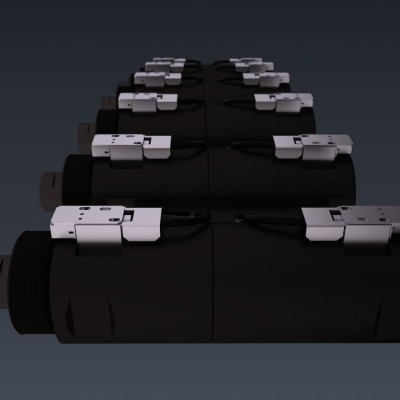Cylinder bodies can be made either of aluminum alloy or steel. Each of them has its own pros and cons, and sometimes it might be confusing to choose the right one.
What features do our customers have to keep in mind when choosing? The following comparison table will surely lend a helping hand!
|
Aluminum Alloy |
Steel |
|
|
Weight |
Light |
Heavy |
|
Service |
Light to medium |
Heavy |
|
Temperature |
Max. 100° C without sensors |
Max 160° C |
|
Pressure |
Medium (220 to 250 bars) |
High (450 bars) |
|
Speed |
Low to medium |
Medium |
|
Fatigue resistance |
Medium |
Good |
|
Stroke |
Short (V250) to long (V220) |
Short to medium (V450) |
|
Rod end |
Female (V250), any (V220) |
Female / male (V450) |
|
Sensor |
Magnetic only |
Mechanical only |
|
Corrosion resistance |
Good (body), decent/fair (other parts) |
Good (rod), decent/fair (other parts) |
Notes:
• Although rods are always made of steel, most of the cylinder weight lies in the body. Therefore, aluminum alloy cylinders weigh a little more than 1/3 of steel cylinders.
• Aluminum alloy elongation with a T6 treatment (or similar ones) is fairly small. Though tensile stress is high, impact resistance is not as good as steel cylinders.
• Mechanical properties of aluminium alloy with T6 treatment (or similar ones) drop sharply above 110 ÷120° C. Therefore, the maximum safe working temperature is about 100° C. On the other hand, for steel body cylinders, temperature limits come from seals and wear rings. However, special versions are available, though they are much more expansive.
• The overall design of steel block cylinders allows for higher static and working pressures.
• Due to their relatively light construction, V250 cylinders are designed for low-speed applications, whereas V220 and V450 cylinders can work at a speed two times higher. However, the actual speed of all cylinders can likely be higher, depending on the type of pumps and circuits adopted.
• Typically, an aluminum alloy cylinder with T6 treatment has an excellent static resistance, but its resistance to fatigue is overall just decent. Non-treated steel cylinders have a very good resistance to fatigue, and they are recommended for parts operating over many million cycles.
• V250 cylinders only offer short strokes, whereas strokes of V450 cylinders go from short to medium. For long strokes, our only option is the V220 series.
• V250 rod-end is female only. Male rod-end for V450 cylinders is under development, because they are sturdier and their capabilities can be fully used with it. V220 cylinders are the most versatile, having the option for floating joints too.
• Magnetic sensors only for V220 and V250 cylinders. For V450 cylinders, only mechanical sensors are available, due to their steel body.
• Anodizing gives aluminum alloy bodies excellent corrosion-resistance properties. However, all the machined parts of the rod are still subject to corrosion. On the contrary, V450 rod treatment allows for good corrosion resistance, but the body is less resistant (steel with surface coating).




